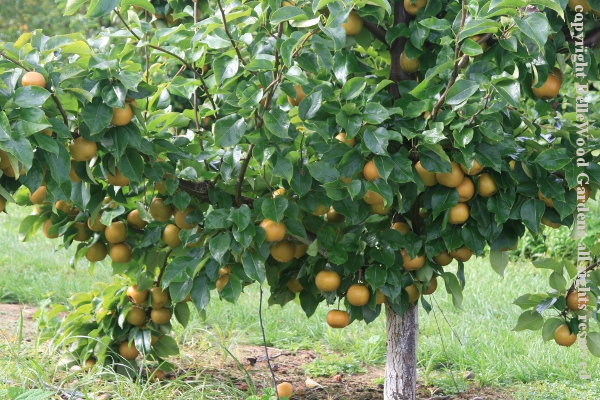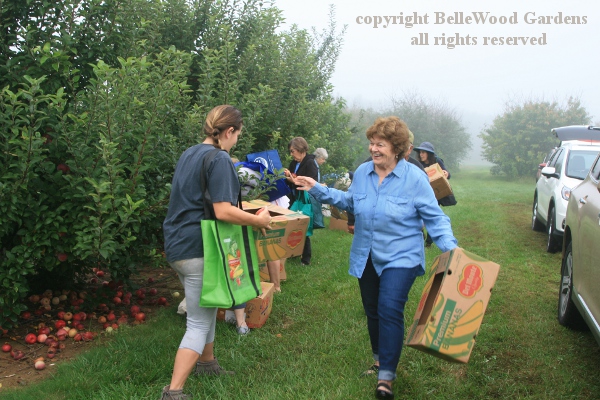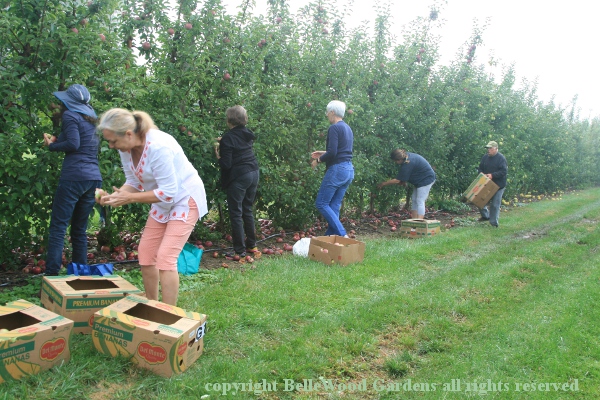
.
If you have any comments, observations, or questions about what you read here, remember you can always Contact Me
All content included on this site such as text, graphics and images is protected by U.S and international copyright law.
The compilation of all content on this site is the exclusive property of the site copyright holder.
Apple Picking at Snyder Research Farm
Thursday, 4 October 2018

"Season of mists and mellow fruitfulness, . . ."
To Autumn, by John Keats

"We" being some members of the Tohickon Garden Club, today we picked a total of 1363.2 pounds of produce for the food bank at the Snyder Research and Experiment Farm of the New Jersey Agricultural Experiment Station: 793 pounds of Empire, Macoun, and Fuji apples; 475.5 pounds of European pears and Asian apple-pears; 71.3 pounds of winter squash; and 23.4 pounds of tomatoes.

Before we start picking Geoff explains how apples are grown today,
with spindle trained trees on dwarfing root stock, 900 per acre,
cultivated in rows. Highly productive but very expensive to start.

It's a good, if foggy day. All the pickers are in a happy mood.

One of the tree identification tags.

Picking, picking, picking. And after we're finished picking for
the food bank, we're allowed to pick some fruit for ourselves.

It goes quickly, and the boxes are filling up.

There are crabapple trees at the ends of the rows, as pollinators.

Finished with apples, we drive over to the pears. These are
Asian apple-pears - crisp, juicy, not my favorites. The flavor
just doesn't appeal to me. There are also European pears.

Red Bartlett type pears, and Bosc, great for cooking and eating.

We're filling the vehicles with boxes of fruit for the food bank.
To finish up, we'll pick some tomatoes and also winter squash.

There are three plots of tomatoes but we can only go pick in two of them. Equipment used to pull the stakes means "keep out" of that plot. The plants are all tumbled over in the other plots as the support cords have been cut. The food bank only wants undamaged fruit - no bruises or soft spots. I pick the damaged fruit for myself, and the unblemished fruit for them.
Now onward to the winter squash.

Goeff points out the Atlantic Giant pumpkins. This is an indicator planting. The researcher in charge treats the plants with all the recommended disease preventatives except for powdery mildew. Fungicides are expensive. He keeps a close watch on the test plot. As soon as he sees signs of powdery mildew all the farmers are notified and can treat their fields in a timely manner.

Geoff planted these winter squash himself, for the food bank.

There are the warty looking gray hubbard squash, even the smallest of which are much bigger than butternut squash. Kept cool and dry they can store for months and months, right through the winter. And another kind, which I think is a banana squash. Geoff says they have a very good flavor and excellent texture, with a small cavity. White pumpkins too.

The mist has lifted. A very fruitful, very good time had by all.
Back to Top
Back to October 2018
Back to the main Diary Page